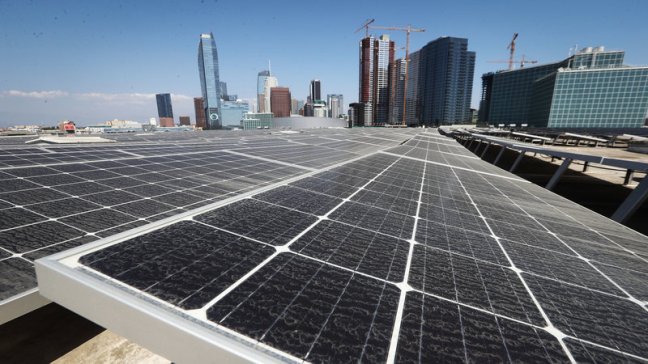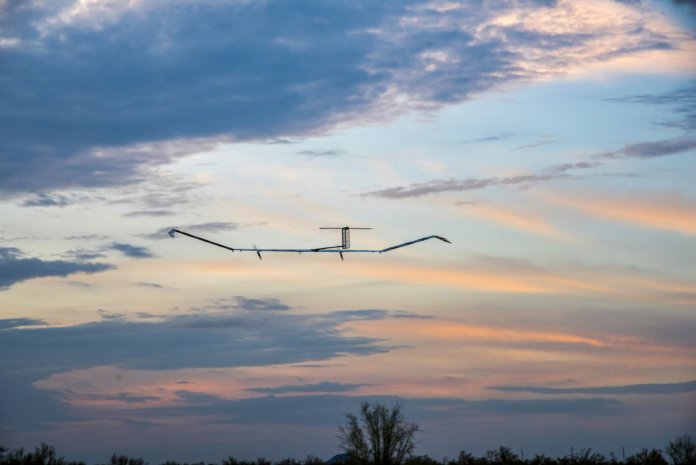One of the major reasons taxpayers are drawn to business opportunities in the solar
space are the benefits provided by solar energy tax credits. Although solar tax credits are substantial, taxpayers might not reap the full benefits unless the taxpayers have the correct tax appetite. Solar tax credits are subject to the passive loss rules under the Internal Revenue Code, which means taxpayers can only use solar tax credits to offset passive income unless the taxpayers can demonstrate material participation in the trade or business.
When solar energy property is placed in service, the taxpayers who own such property are eligible for solar tax credits. The amount of the solar tax credits is a percentage of the qualified basis of such solar property. In the case of solar property, the construction of which begins on or before Dec. 31, 2019, the solar tax credit is equal to 30% of the qualified basis of such solar property. For solar property, the construction of which begins after Dec. 31, 2019, and before Jan. 1, 2021, the solar tax credit is equal to 26% of the qualified basis of such solar property. For solar property, the construction of which begins after Dec. 31, 2020, and before Jan. 1, 2022, the solar tax credit is equal to 22% of the qualified basis of such solar property. For solar property, the construction of which begins after Dec. 31, 2021, the solar tax credit is equal to 10% of the qualified basis of such solar property.
Notwithstanding the forgoing, there will be no solar tax credit for residential solar property, the construction of which begins after Dec. 31, 2021, which is owned by the owner of the home. The solar tax credit will remain at 10% for residential solar property owned by a third party through a power purchase agreement.
Solar tax credits are subject to the passive loss rules under Code Section 469 and its regulations. “Passive activity” is defined as any activity involving the conduct of any trade or business in which the taxpayer does not materially participate. As a result, solar tax credits can only be used to offset tax liability attributable to passive income unless the taxpayer can demonstrate material participation by satisfying one of the seven material participation tests set forth in the tax regulations. “Material participation” means involvement in the operations of an activity that is “regular, continuous, and substantial.”
The seven material participation tests set forth in the regulations are as follows:
(1) Hourly safe harbor: The taxpayer participates in an activity for more than 500 hours during the current taxable year.
(2) Primary participant: The taxpayer’s participation in the activity for the current taxable year constitutes substantially all of the participation of all individuals in the activity (including individuals who are not owners of interest in the activity). As such, under Test 2, only one of the principals can satisfy the material participation test. In order for the taxpayer to satisfy Test 2, the taxpayer cannot have employees or non-employees performing most of the work. Discrete tasks, such as appropriate delegation of maintenance and servicing of solar property, or the performance of ministerial tasks, would not defeat the taxpayer’s ability to meet Test 2 so long as the taxpayer remains the primary participant and can demonstrate material participation in the trade or business. Although there is no hourly requirement to meet Test 2, the Internal Revenue Service (IRS) generally looks to see at least 100 hours of material participation from the taxpayer.
(3) Maximum participant: A taxpayer participates in the activity for more than 100 hours during the current taxable year, and such participation is not less than the participation in the activity of any other individual (including individuals who are not owners of interests in the activity). As such, if there are multiple active principals in a company owning solar property, while satisfying the 100-plus-hour requirement under Test 3, each active principal cannot participate less than anyone else, including the other active principals. There would have to be an equal division of activity across all of the active principals, at a minimum of 100-plus hours each.
(4) Significant participation activity aggregation: The activity is a significant participation activity (SPA), and the taxpayer’s aggregate participation in all SPAs during the current taxable year exceeds 500 hours. An SPA is generally an activity in which the taxpayer participates for more than 100 hours during the current taxable year but by itself does not qualify as a material participation activity otherwise.
(5) Historical participation: The taxpayer materially participated in the activity for any five years (whether or not consecutive) during the 10 years immediately preceding the current taxable year.
(6) Personal service activity: The taxpayer materially participated in a personal service activity related to the solar property (professions or trades in which capital is not an income-producing factor) for any three years (whether or not consecutive) preceding the current taxable year.
(7) Facts and circumstances: The taxpayer does not meet material participation Tests 1-6, but based on all of the facts and circumstances, the taxpayer participates in the activity on a regular, continuous and substantial basis during the taxable year. The taxpayer must participate in the activity for at least 100 hours a year under this test. Time spent managing the activity will not count towards the 100-plus hours if any individual other than the taxpayer receives compensation for managing the activity, or if another person spent more hours than the taxpayer managing the activity.
A taxpayer’s participation in an activity may be established by “any reasonable means.” These means may include “contemporaneous daily reports, logs or similar documents,” but such documents are not required if the taxpayer identifies the “services performed over a period of time and the approximate number of hours spent performing such services … based on appointment books, calendars or narrative summaries.”
For purposes of analyzing whether a taxpayer is a material participant, it is important to distinguish between work that is customarily performed by owners, which does qualify, from participation as an investor, which does not qualify.
Examples of work performed as an investor that is not treated as material participation include “studying and reviewing financial statements or reports on operations of the activity” and “preparing or compiling summaries or analyses of the finances or operations of the activity for the individual’s own use.” Taxpayers are cautioned that if they delegate to others a significant portion of the work that is required to control and operate the business, the taxpayers’ own material participation may not be considered “regular, continuous and substantial.”
The material participation of the taxpayer is not the only factor to consider when determining whether solar tax credits can be used to offset active income. The IRS also looks at the type of business entity that owns the solar property. Specifically, the IRS has taken the position that limited partners in a limited partnership and members of a limited liability company (LLC) created under state law are presumed not to materially participate in the business entities that own the solar property.
Taxpayers often enter into a business structure that involves an LLC as the holding company of the entity that owns and operates the solar property. Taxpayers may create a holding company to serve as the sole manager/member of a single member LLC that owns, installs and manages the solar property. The Internal Revenue Code provides that unless the exceptions under the tax regulations are met, “no interest in a limited partnership as a limited partner shall be treated as an interest with respect to which a taxpayer materially participates.”
Under most state laws, an LLC member has limited liability. As a result, the IRS has historically treated LLC members like limited partners to the extent that they are presumed not to materially participate in their respective trades or businesses.
The tax regulations do provide three exceptions to the general rule under the code that limited partners (or LLC members) cannot materially participate in their trade or business. The three exceptions to the general rule are when the limited partner (or LLC member) is found to meet material participation Test 1 (500-hour safe harbor), Test 5 (historical participation) or Test 6 (personal service activity).
In contrast to the position taken by the IRS, there is a line of case law that rejects the IRS’ position that LLC members are, by virtue of the limited liability provisions of state laws, equivalent to limited partners. The courts have expanded the means by which limited partners or LLC members can demonstrate material participation by allowing such taxpayers to use any one of the seven material participation tests. Although the IRS has not formally adopted the treatment of limited partners and LLC members by the courts with respect to material participation, the prevailing view is that all seven material participation tests are applicable to limited partners and LLC members.
Taxpayers with a significant appetite for the use of passive tax credits can take full advantage of solar tax credits without consideration as to whether they are materially participating in their respective trade or business. In contrast, taxpayers with an appetite to use solar tax credits to offset active income must demonstrate material participation.
Based on the prevailing case law, it is possible for LLC members to demonstrate material participation by meeting any one of the seven material participation tests. It is recommended that both the LLC operating agreement and individual business activity of the LLC member reflect that the LLC member takes part in “controlling the business.” That way, the taxpayer will be subject to the “general partner” exception under the tax regulations.
Regardless of the type of business structure that owns the solar property, all taxpayers are recommended to consider the type of income they have to offset (passive or active) and, if necessary, whether material participation can be demonstrated in order to maximize the benefits of solar tax credits.
This article was originally published by











